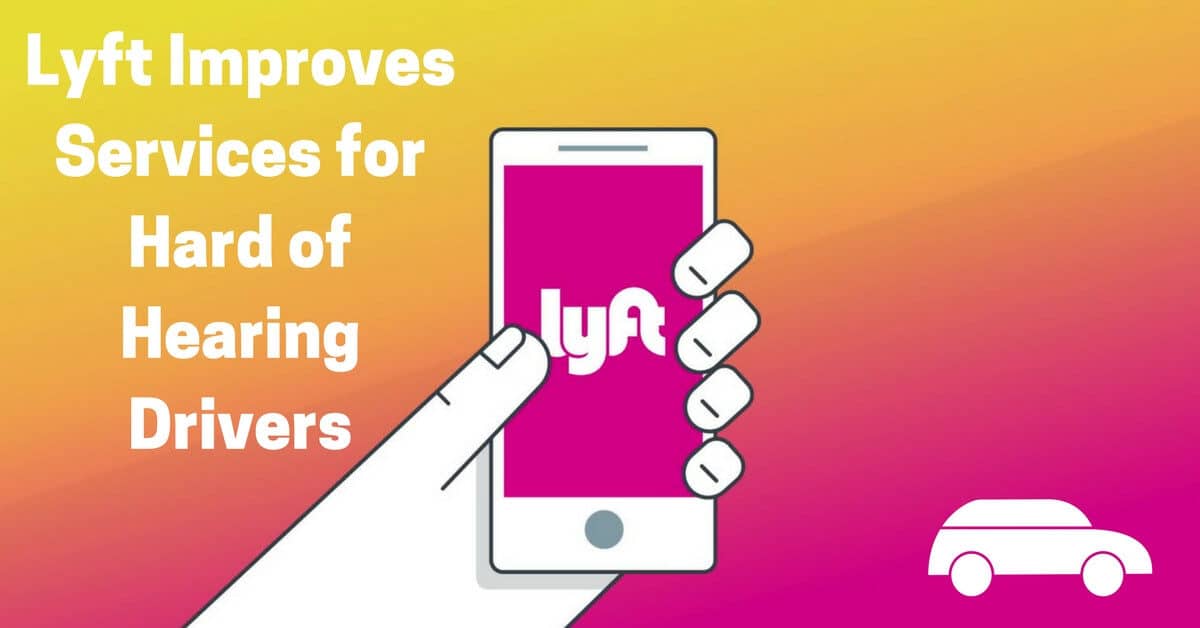Are you familiar with Lyft? For those of you who are avid Uber fans, Lyft is a similar transportation network that offers ride service with a twist. Making Lyft available to everyone, they’ve added advanced accessibility features to their app to allow more people to drive, and to seamlessly connect passengers to their drivers.
What is Lyft?
Lyft, like other ride-hailing services, connects passengers to drivers across the country, providing a convenient and safe driver service to millions of Americans. What makes Lyft so special is their advanced accessibility features. In partnership with the National Association of the Deaf (NAD), a non-profit organization that never tires in advocating for deaf rights, Lyft is the only driving service that helps deaf and hard of hearing drivers get more fares. For those in the deaf and hard of hearing community, driving is an attractive career choice since much of the communication with passengers can be through text or phone apps.
Lyft takes pride in their accessibility features, the most versatile of which is Amp, an in-car communication device that’s mounted in the vehicle so both drivers and passengers can see the screen. It displays passenger’s messages so the driver can see them when driving, and communicate easily. That’s not all Amp does, it also lights up with incoming notifications, changes colors, and even sends messages to passengers. Lyft, along with the NAD, is excited to “develop further app improvements, grow awareness of economic opportunities for the deaf and hard of hearing, and engage policymakers on the importance of ride-sharing access.”
Two Exciting New Features to Aid Accessibility
This September, Lyft added 2 new and exciting features to their platform, one for drivers and one for passengers. Their improvements for drivers include a ride request feature so the driver’s app, or their Amp, will receive a flash-on-request. Deaf and hard of hearing drivers often lose out on rides because they can’t hear the new ride notification. Drivers who activate the accessibility features of the app will have the option to have the both their phone screen and the flashlight light up when they have a pending ride request. If they’re using Amp, notifications will appear there, along with a large ‘New Ride’ message, so they’ll never miss another ride.
The second new feature is for those hailing a ride, and is all about communication. Passengers will receive a text message letting them know their driver is deaf or hard of hearing, and to contact the driver via text rather than a phone call. They’ll also be reminded to let the driver take the lead in communication. But that’s not all. For passengers who want to take the first steps in communication, Lyft sends a link to a quick and easy tutorial that takes just a few seconds to teach people how to sign ‘hello’ and ‘thank you’ in American Sign Language (ASL). Passengers are excited to have a way to support the deaf and hard of hearing members of their community, and drivers are thrilled to have passengers practicing ASL and making the effort to communicate.
The Impact of Lyft
While these may seem like simple additions to a ride-hailing system, Lyft’s new accessibility features have a huge impact for those in the deaf and hard of hearing community. Adding a visual notification along with an auditory one might not make much of a difference to you, but for someone who can’t hear, these simple changes mean the difference between integration and isolation. With Lyft, those who are deaf or hard of hearing can participate fully in normal activities the rest of us take for granted, like being able to earn some extra cash by driving. Lyft continues to work with the NAD to find new ways to improve their service, and to promote awareness of the importance of equal access to opportunities for hearing and deaf alike.
If you’re struggling to hear, and are worried that you’re missing out on opportunities, visit us at the nearest My Hearing Centers location for a hearing assessment. Treating you hearing loss early is the key to a smooth transition to hearing aids, and for Americans over the age of 50 we recommend yearly auditory assessments so we can help you track your hearing, and make sure you never miss a beat.


